Hipparchia azorina, the Azores grayling, is a species of butterfly in the family Nymphalidae. It is endemic to the Azores. Its natural habitats are temperate forests and temperate grassland. It is threatened by habitat loss.
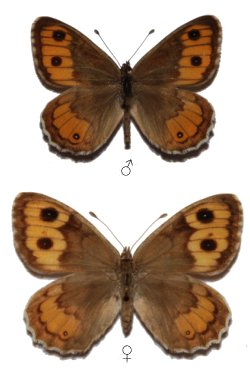
Pseudochazara euxina is a species of butterfly in the family Nymphalidae. It is endemic to Crimea. Its natural habitats are temperate forests and temperate grassland. It is threatened by habitat loss.

The marbled ringlet is a member of the subfamily Satyrinae of the family Nymphalidae.

The de Prunner's ringlet is a member of the subfamily Satyrinae of the family Nymphalidae.
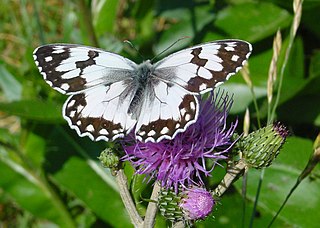
Melanargia lachesis, the Iberian marbled white, is a butterfly species belonging to the family Nymphalidae.

Erebia cassioides, the common brassy ringlet, is a member of the subfamily Satyrinae of family Nymphalidae.
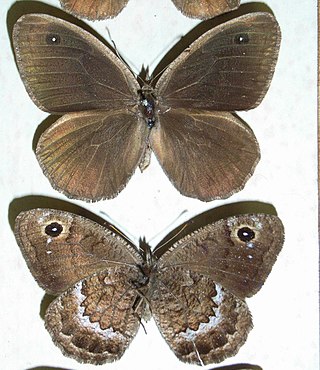
Satyrus actaea, the black satyr, is a butterfly of the family Nymphalidae. It is found in South-Western Europe, Asia Minor, Syria, Iran and Baluchistan.

Pseudochazara atlantis is a species of butterfly in the family Nymphalidae. It is endemic to Morocco. It flies in barren rocky slopes. The male is found only on large tabular spaces and bare mountain peaks, while the female wanders on the slopes, both for foraging the flowers of Compositae or thyme and to lay her eggs.
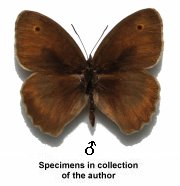
Maniola chia is a species of butterfly in the family Nymphalidae. It is endemic to Chios and Oinousses in the Aegean Islands. It is a very common butterfly found amongst grassy flowery places but it is almost impossible to distinguish the specimens from Maniola jurtina.

Melanargia titea, the Levantine marbled white, is a butterfly of the family Nymphalidae.
Erebia polaris, the Arctic woodland ringlet, is a butterfly of the family Nymphalidae. It is found in Lapland and boreal Asia.
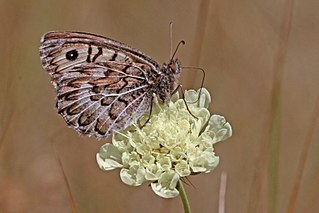
Pseudochazara geyeri, the Grey Asian grayling is a species of butterfly in the family Nymphalidae. It is confined to Albania, Greece, North Macedonia, eastern Turkey and south-western Transcaucasia.

Pseudochazara graeca is a species of butterfly in the family Nymphalidae. In Greece it is confined to Mount Parnassus, Mount Olympus, Mount D'rfis, Mount Chelmos, Mount Panakhaikon, Mount Menalon, Mount Mainalo, Mount Taygetus and Katara Pass in the Pindus Mountains. In North Macedonia it is found on Pelister.

Pseudochazara mamurra, the buff Asian grayling, is a species of butterfly in the family Nymphalidae. It is confined to Albania, Greece, and Turkey. The habitat consists of slopes in steep river valleys.
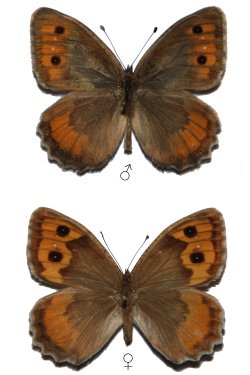
Pseudochazara mniszechii, the tawny rockbrown, is a species of butterfly in the family Nymphalidae. It is confined to Greece, Turkey, northern Iran, Balochistan, and the Caucasus.
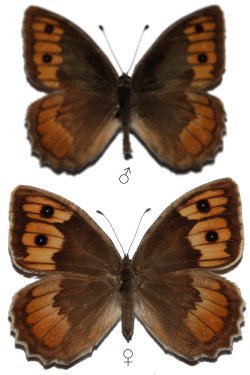
Pseudochazara orestes, the Dils' grayling, is a species of butterfly in the family Nymphalidae. It is confined to Phalakron massif, Menikion mountains, Mount Orvilos – Greece; South Pirin mountains, precisely on the southern slopes of the Gradishte Hill in south-western Bulgaria.

Pseudochazara schahrudensis or Shahrud grayling is a species of butterfly in the family Nymphalidae. It is confined to Bitlis, Hakkari, Van, Şırnak in Turkey; to the Caucasus to the eastern Alborz.
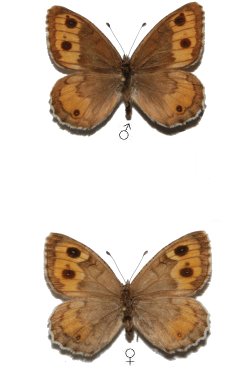
Pseudochazara williamsi, the nevada grayling, is a species of butterfly in the family Nymphalidae. It is confined to the southern Spain (endemic).

Arethusana is a butterfly genus from the subfamily Satyrinae of the brush-footed butterfly family (Nymphalidae). It is composed of only one species, Arethusana arethusa, the false grayling.
Pletvar is a village in Municipality of Prilep, North Macedonia. The critically endangered Macedonian grayling butterfly is only found in the Pletvar area. The father of Metodija Andonov-Čento an anti fascist fighter in World War II is from here.



















